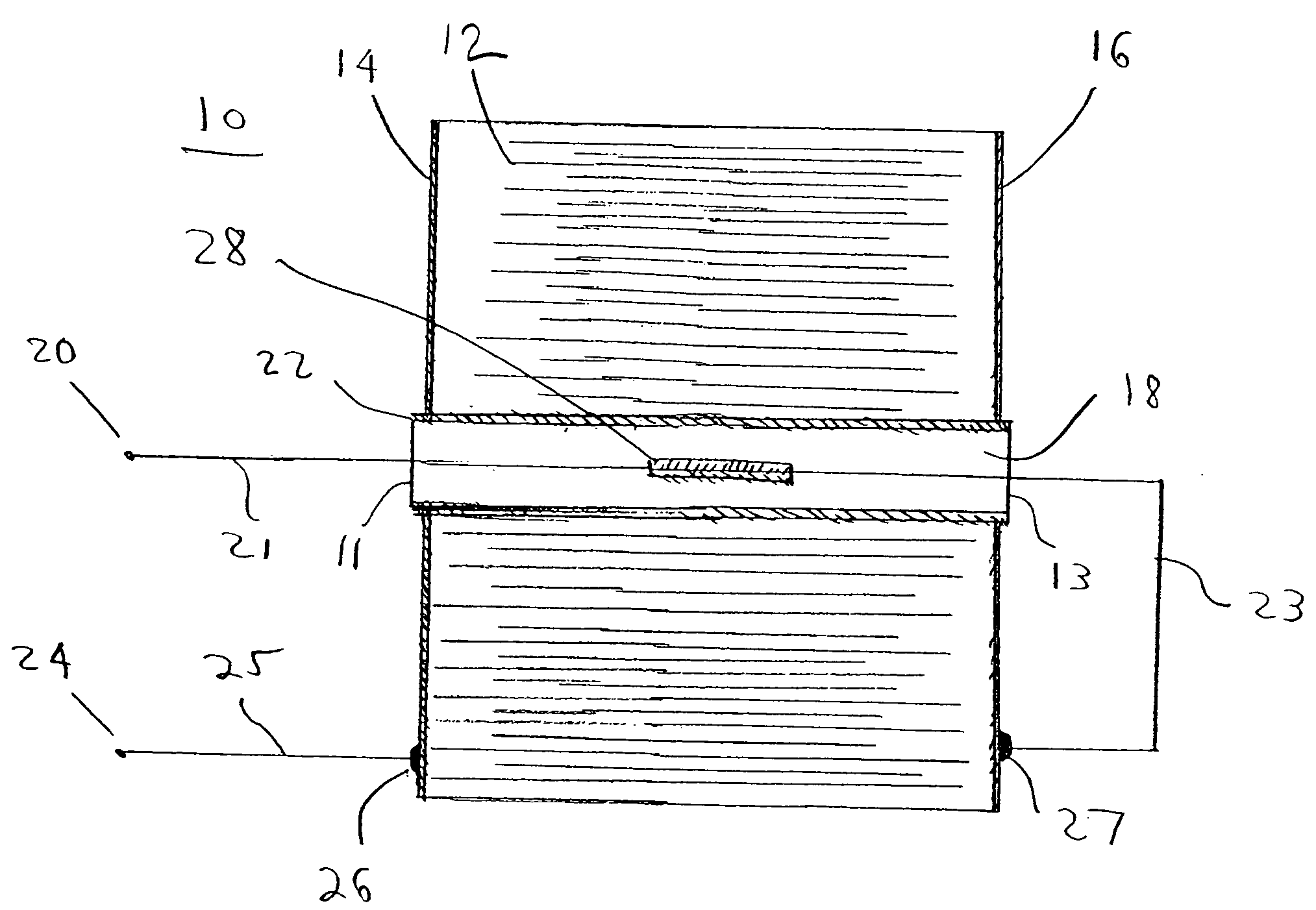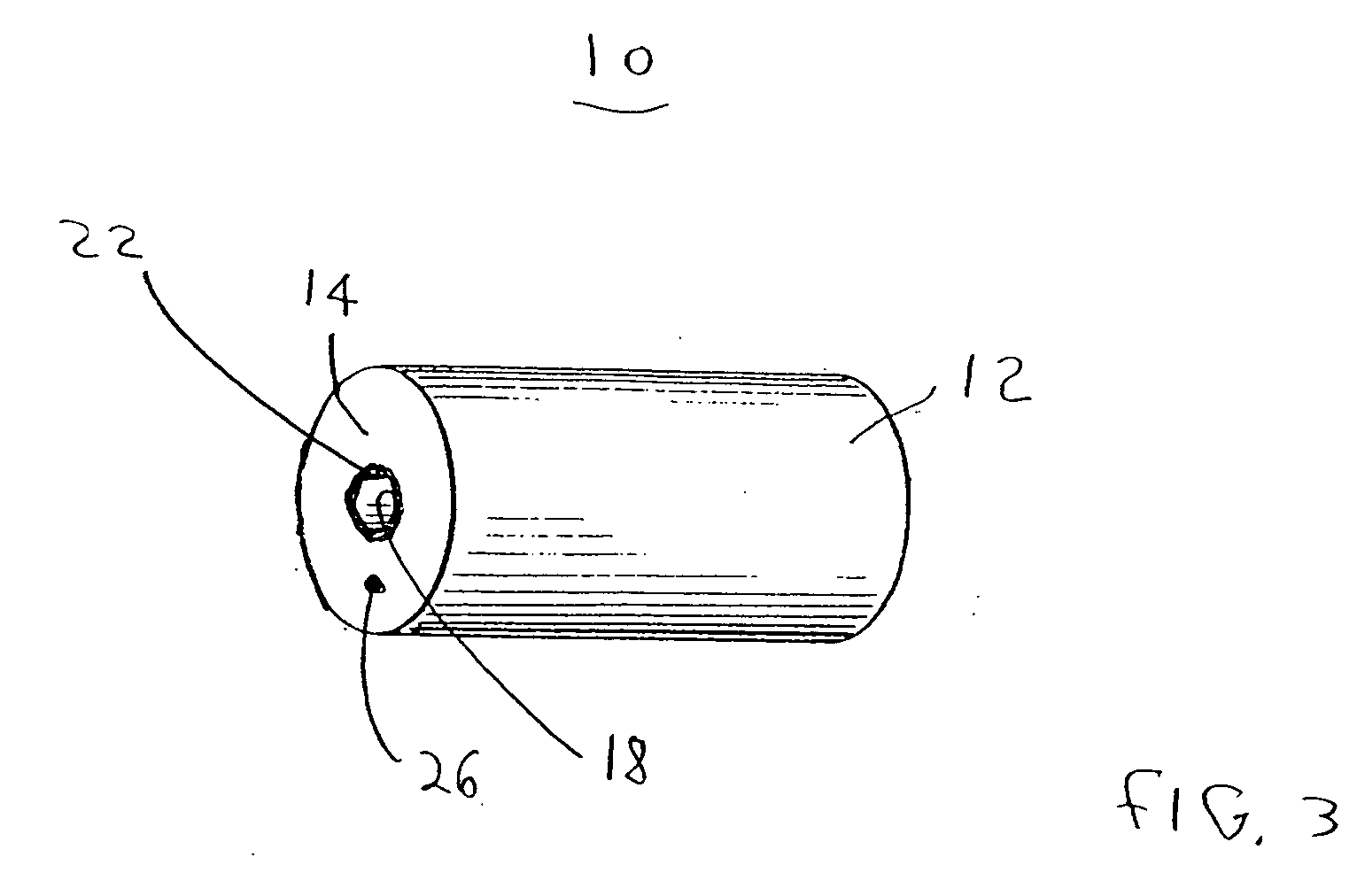Wound capacitor having a thermal disconnect at a hot spot
- Summary
- Abstract
- Description
- Claims
- Application Information
AI Technical Summary
Benefits of technology
Problems solved by technology
Method used
Image
Examples
Embodiment Construction
[0029]Referring now to the FIGS. 1, 2 and 3 there is shown a high current carrying capacitor, generally designated as 10. Capacitor 10 includes hollow core 18 surrounded by capacitor winding 12, whereby thermal energy produced within capacitor winding 12, resulting from electrical current passing through winding 12, is transmitted to hollow core 18. As shown, hollow core 18 is formed by non-conducting tubular section 22 which extends slightly beyond the ends of capacitor winding 12 and includes thermal energy from capacitor winding 12. At opposite ends of capacitor winding 12 are two metallization layers 14 and 16.
[0030]It will be appreciated that on completion of winding 12 of the capacitor roll, the ends of capacitor winding 12 may be sprayed with a high velocity mixture of compressed air and molten fine particles of tin produced from an electric arc gun. This spray forms opposing metallization layers 14 and 16, which may be considered electrically the same as opposing first and s...
PUM
 Login to View More
Login to View More Abstract
Description
Claims
Application Information
 Login to View More
Login to View More - R&D
- Intellectual Property
- Life Sciences
- Materials
- Tech Scout
- Unparalleled Data Quality
- Higher Quality Content
- 60% Fewer Hallucinations
Browse by: Latest US Patents, China's latest patents, Technical Efficacy Thesaurus, Application Domain, Technology Topic, Popular Technical Reports.
© 2025 PatSnap. All rights reserved.Legal|Privacy policy|Modern Slavery Act Transparency Statement|Sitemap|About US| Contact US: help@patsnap.com



